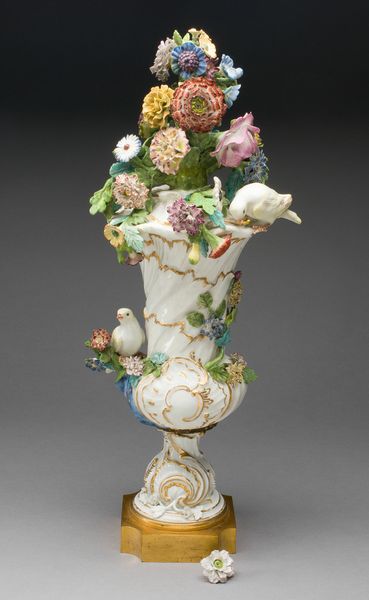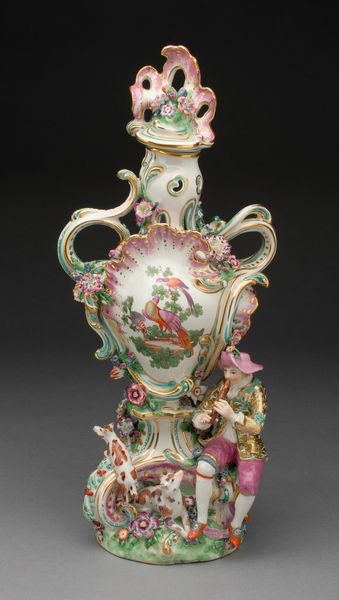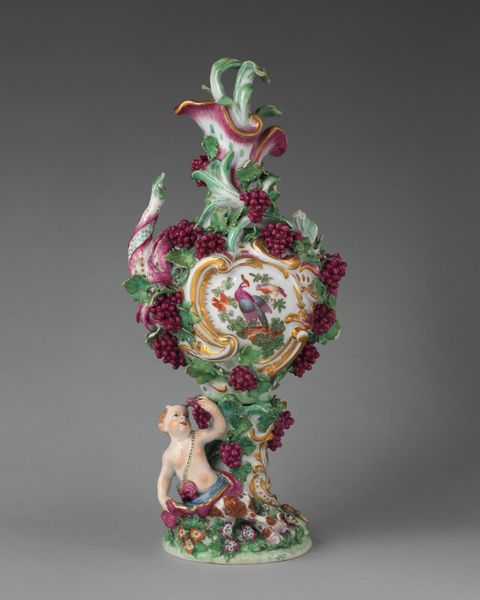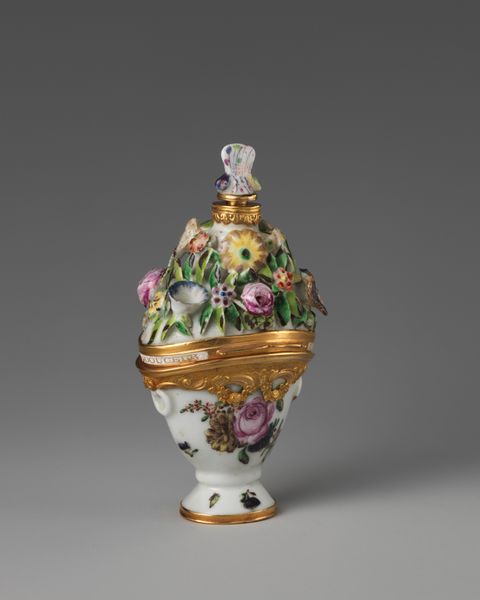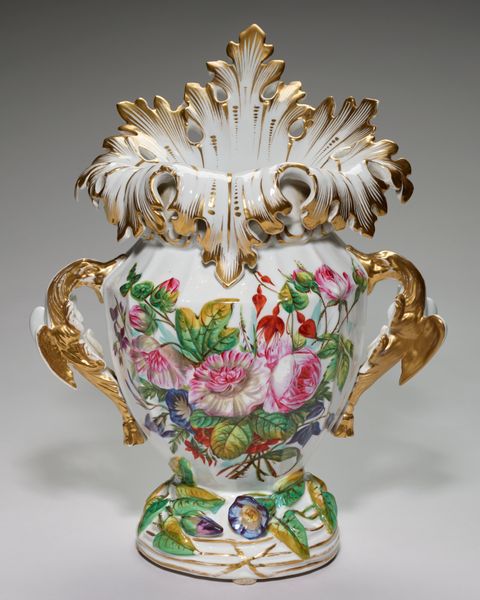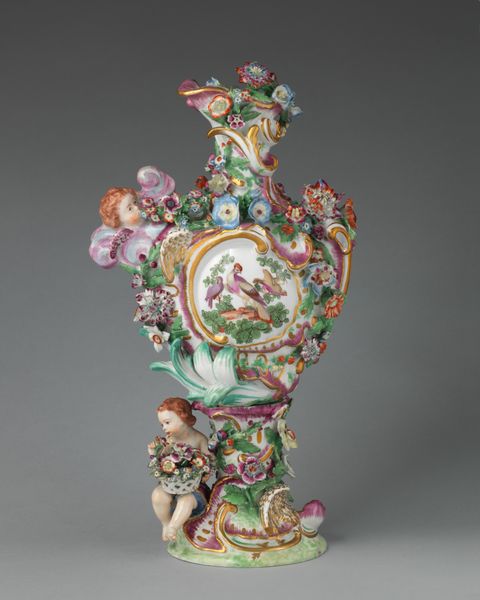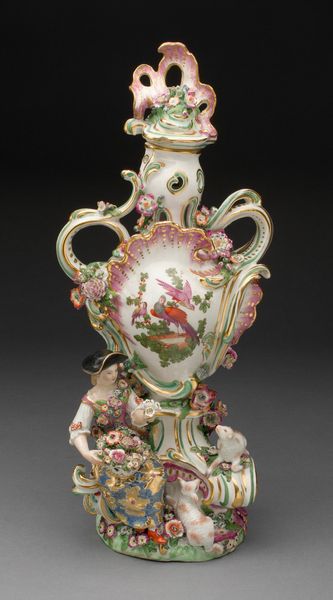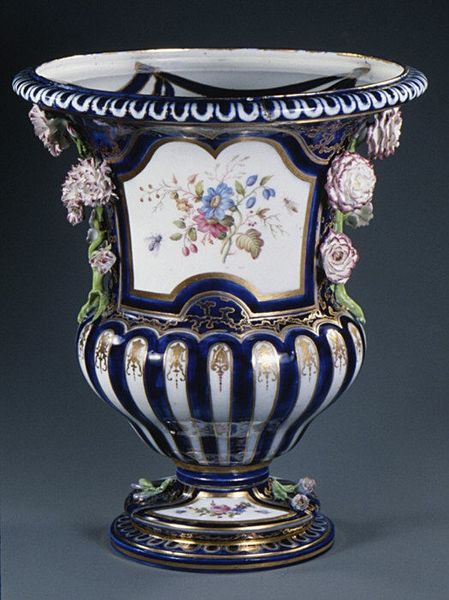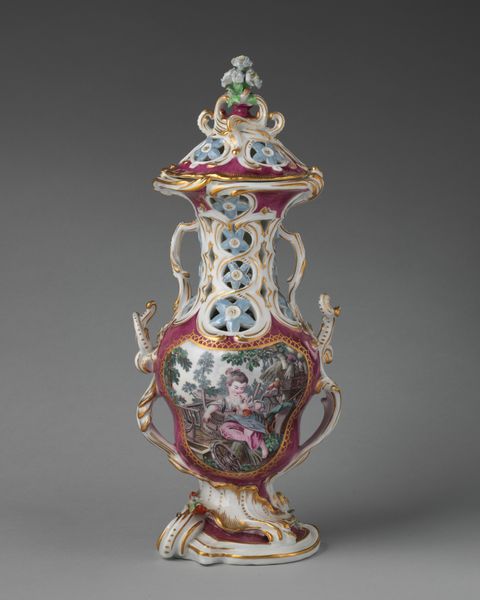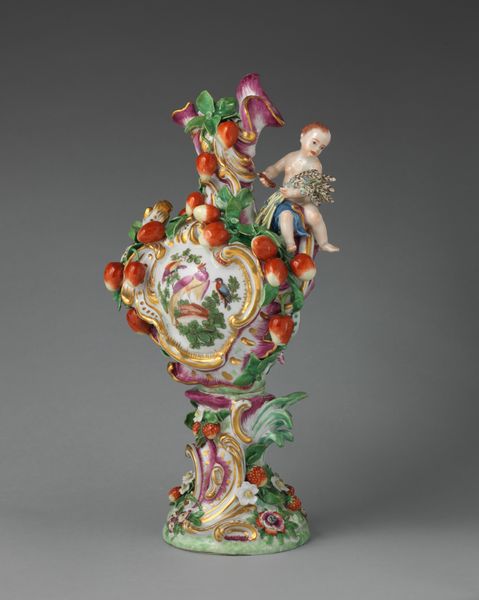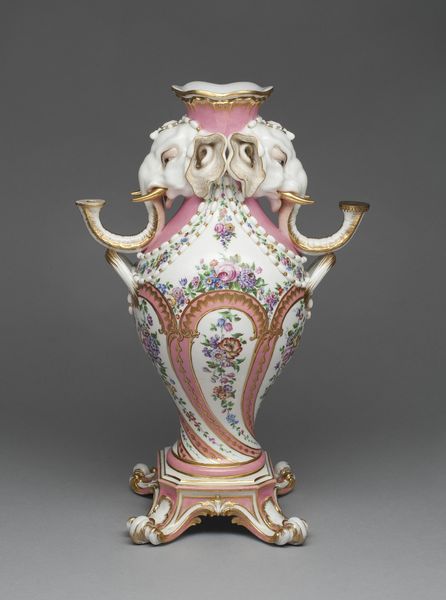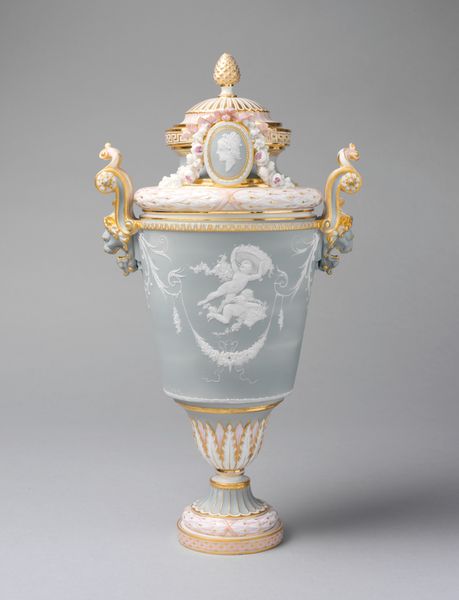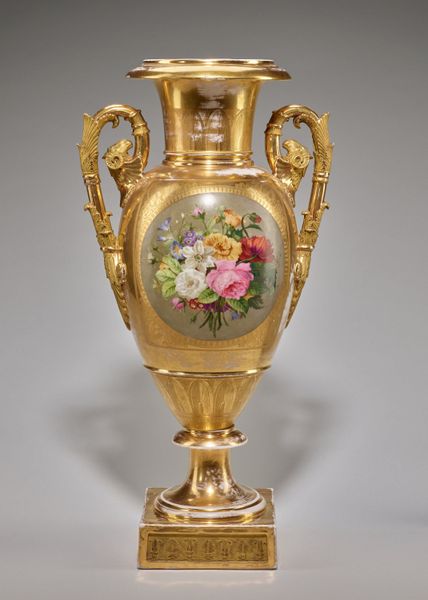
ceramic, porcelain, sculpture
#
ceramic
#
vase
#
porcelain
#
sculpture
#
ceramic
#
decorative-art
#
decorative art
#
rococo
Dimensions: H. 50.8 cm (20 in.)
Copyright: Public Domain
Curator: Let’s discuss this delightful porcelain vase crafted around 1750 by the Meissen Porcelain Manufactory. It’s part of the decorative arts collection here at the Art Institute of Chicago. Editor: It strikes me immediately as something purely ornamental—an emblem of privilege perhaps, all ornate curves and pastel hues. Curator: Indeed. Its Rococo styling embodies lightness, grace, and the playful spirit prevalent in elite circles of the era. Observe how the sculpted flowers explode from the top, and how delicate porcelain birds perch on the sides. It is as much a sculpture as it is a vessel. Editor: And it’s so fragile! This vase and its contents evoke a constructed sense of artificiality—where even nature itself, those blooms and birds, are contained and idealized, devoid of their inherent wildness. What narratives of class and control are intertwined in this aesthetic presentation? Curator: Certainly, the vase suggests a constructed ideal of beauty. But look closely at the detail: the spiraling, asymmetrical handles, the profusion of different flower types, the minute brushstrokes used to create the vibrant colors. Meissen’s artisans displayed extraordinary technical prowess, pushing the boundaries of what could be achieved with porcelain. Editor: The artistry is undeniable, yes, yet what does this craftsmanship truly represent? Think of the social context: enslaved labor was often part of porcelain production, and these vases signified elitism through an unsustainable consumerism. Even in its supposed beauty, violence is deeply embedded. Curator: I appreciate your point. Considering how these objects existed within complex societal systems does invite difficult, necessary reflection. However, I also see it as a cultural document. Through precise formal study, we can better understand aesthetic sensibilities in Europe in the mid-18th century. Editor: And through historical and intersectional understanding, we begin to dismantle those accepted truths. Both analysis approaches become invaluable in contextualizing beauty, privilege, and material culture. Curator: Precisely. Each perspective sheds light, allowing us a richer and ultimately deeper appreciation of this porcelain treasure. Editor: Absolutely; the vase, far from silent, actively participates in an ongoing critical conversation about its past.
Comments
No comments
Be the first to comment and join the conversation on the ultimate creative platform.
